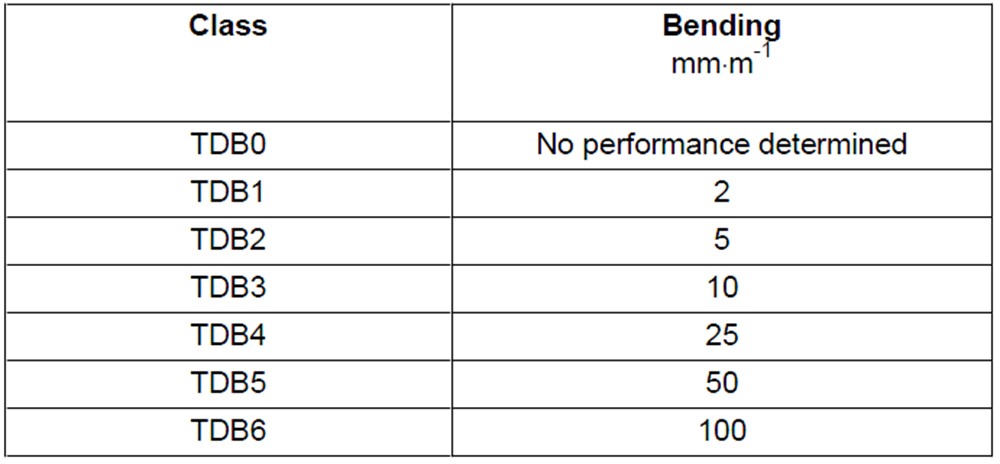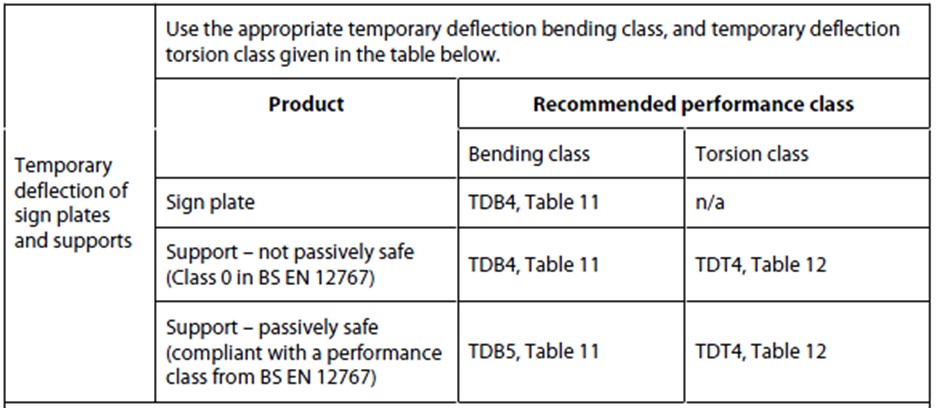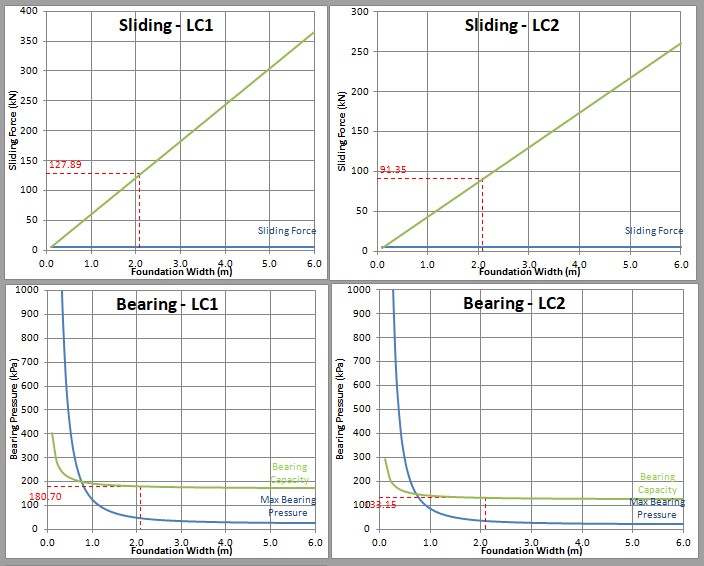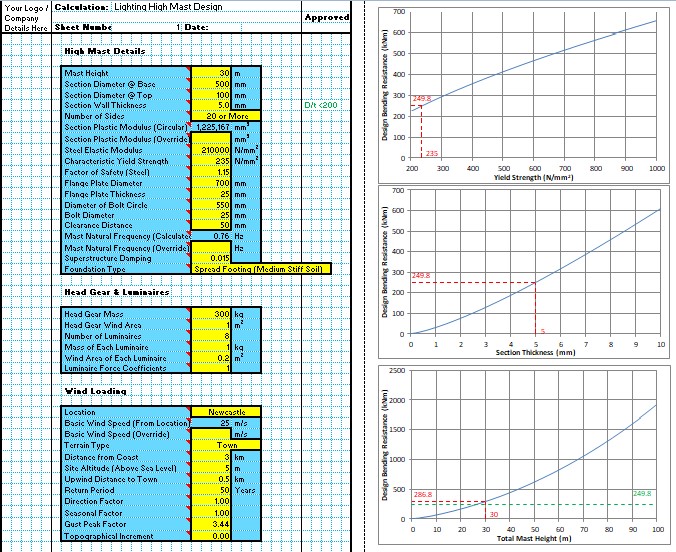Sign post design in accordance with BS EN 12899-1 depends on the ULS design bending moment and shear forces, and SLS deflection of the sign post under the wind loading. The selection of a suitable sign post depends on the below parameters. The CivilWeb Sign Post Foundation Design Calculator allows the user to select a number of commonly specified steel circular hollow sections and then checks the posts suitability against bending, shear, torsion and deflection.
Sign Post Design - Partial Factors
The sign post design procedure includes two partial factors, a partial factor for the wind loads at ULS and a partial factor for the sign post material. Both these partial factors are given in BS EN 12899-1 and are shown below.
Sign Post Design - Bending Moment
The maximum bending moment acting on the sign post can be determined from a simple analysis of the sign post as a cantilever member.
The lever arm is the height to the centroid of the sign, which can be calculated as the total sign post height minus half the sign height. The total height of the sign must include any parts of the post above the foundation which are buried.
Sign Post Design - Torsion
Torsion can be significant where part of the sign is shielded from wind or if a standard force of 0.5kN is applied at the extremity of the sign. Torsion from wind loading can be calculated as half the total wind load, applied at a distance of a quarter of the sign width. The torsion from a point load of 0.5kN is applied at a distance of half the sign width.
The combined bending and torsion moments will be considered when choosing a sign post section size. This is only applicable on single sign posts.
Sign Post Design - Shear Force
The shear force per sign post can be calculated simply as the wind force divided by the number of sign posts.
The shear force is unlikely to be critical except for very large signs mounted very close to the ground. It is included in the CivilWeb Sign Post Foundation Design Calculator as a design check anyway for completeness.
Sign Post Design - Temporary Deflection Check
The CivilWeb Sign Post Foundation Design Calculator also completes a design check on the temporary deflection of the sign post under wind loading. First the Wind Force must be altered from a 25 year return period to a 1 year return period, and taken at 75% of the reference wind velocity, which is the SLS criterion. This is done by multiplying the 25 Year Wind Force Fw,d by 0.752/0.962.
This amended 1 year Wind Force (Fw,d (1 Year)) is then divided by the sign height to give the universally distributed load along the sign height.
The maximum deflection of the sign post at the top of the sign is given by the following equation where E = Elastic Modulus of Steel (typically taken as 205x103N/mm2), I = Post moment of inertia, n = number of posts.
The maximum deflection value can then be converted into a deflection per metre value by dividing by the total height of the sign post. This value of deflection per metre should not be greater than the value for sign post deflection class as shown in the below table taken from BS EN 12899-1.
Generally in the UK deflection class TDB4 is used for road sign posts as shown below in a table taken from the NA to BS EN 12889-1 which allows up to 25mm/m deflection.
Sign Post Design with the CivilWeb Sign Post Foundation Design Calculator
The CivilWeb Sign Post Foundation Design Calculator is the quickest and easiest way for a designer to complete a sign post design in accordance with BS EN 12889-1. The spreadsheet calculates the wind loadings acting on the sign post and instantly recommends the lightest (usually cheapest) circular hollow section which complies with the design criteria. The spreadsheet also designs the sign post foundation as either an embedded pole or a pad foundation.
Get your copy of the CivilWeb Sign Post Foundation Design Calculator including detailed sign post design now for only £20.
Or why not bundle the CivilWeb Sign Post Foundation Design Calculator with our Street Light Foundation Design Spreadsheet for only £5 extra?
Download Free Trial Version
To try out a fully functional free trail version of this software, please Click Here or enter your email address below to sign up to our newsletter.
Error: Contact form not found.






